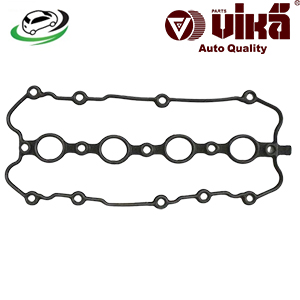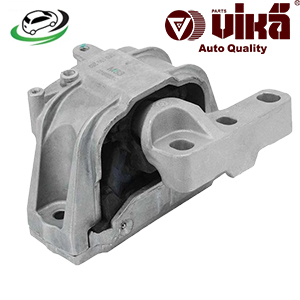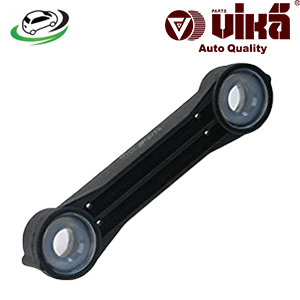-9%
Get Gear Shift Selector Rod Audi A3 8L1 (1997-2003) / Volkswagen Golf MKIV/Bora 1J2 (1998-2005) 1J0711596E
The gear shift selector rod is a crucial component in the transmission system of both manual and automatic vehicles. Its primary function is to connect the gear shift lever to the transmission, allowing the driver to select and change gears. Understanding the role, construction, common issues, and maintenance of the gear shift selector rod can help ensure smooth and efficient operation of your vehicle. Here is an in-depth look at the gear shift selector rod.
Function and Importance
- Transmission Control: The gear shift selector rod facilitates the transfer of the driver’s input from the gear shift lever to the transmission. This enables the selection of the appropriate gear, whether in a manual or automatic transmission system.
- Gear Engagement: In manual transmissions, the rod directly moves the internal shift forks that engage different gears. In automatic transmissions, it helps position the transmission control module or valve body to the correct gear.
- Driver Feedback: The gear shift selector rod provides tactile feedback to the driver, allowing them to feel the engagement of gears. This feedback is essential for smooth and accurate gear changes, especially in manual transmissions.
Construction and Types
Gear shift selector rods are typically made from durable materials such as steel or aluminum to withstand the stresses of regular use. There are different types of gear shift selector rods, depending on the transmission type and vehicle design:
- Manual Transmission Selector Rods: These rods connect directly to the shift forks inside the transmission. They are usually straight or slightly curved and may have adjustable lengths for precise gear engagement.
- Automatic Transmission Selector Rods: These rods connect the gear shift lever to the transmission control module or valve body. They often feature a more complex design with multiple linkages to accommodate the various positions of an automatic shifter.
Common Issues and Symptoms
Like any mechanical component, the gear shift selector rod can experience wear and tear over time. Common issues include:
- Wear and Tear: Continuous use can cause the rod to wear out, leading to looseness or play in the gear shift mechanism. This can result in inaccurate gear selection or difficulty shifting.
- Corrosion: Exposure to moisture and road salt can cause the rod and its components to rust or corrode, compromising their function and integrity.
- Bent or Broken Rods: Accidents, improper shifting, or excessive force can bend or break the gear shift selector rod, making it difficult or impossible to change gears.
- Worn Bushings: The bushings that support the gear shift selector rod can wear out, leading to excessive play and imprecise gear shifts.
- Misalignment: Over time, the rod can become misaligned, causing difficulty in selecting the correct gear or causing the gear lever to feel loose.
Benefits of a Gear Shift Selector Rod
1. Smooth Gear Shifting
One of the primary benefits of a gear shift selector rod is facilitating smooth gear transitions. It accurately transmits the driver’s gear shift input to the transmission, ensuring that gears engage seamlessly. This smooth shifting enhances driving comfort and reduces wear on the transmission components.
2. Precise Gear Selection
The gear shift selector rod ensures precise gear selection by maintaining the correct alignment and positioning of the transmission components. This precision is crucial for both manual and automatic transmissions, as it allows the driver to select the appropriate gear without hesitation or error.
3. Enhanced Driving Experience
By enabling smooth and precise gear shifts, the selector rod significantly enhances the overall driving experience. It allows for more controlled and responsive driving, particularly in manual transmissions where the driver’s input directly affects gear changes.
4. Reduced Wear and Tear
A properly functioning gear shift selector rod reduces the wear and tear on the transmission system. Smooth and accurate gear shifts minimize the strain on the gears, synchronizers, and other transmission components, extending their lifespan and reducing the need for frequent repairs.
5. Improved Fuel Efficiency
Efficient gear shifting facilitated by the selector rod can contribute to improved fuel efficiency. In manual transmissions, the ability to quickly and accurately shift gears helps maintain optimal engine performance and fuel economy. In automatic transmissions, precise gear engagement ensures the transmission operates efficiently.
6. Driver Safety and Control
The gear shift selector rod plays a crucial role in maintaining driver safety and control. By ensuring that the correct gear is selected, it prevents accidental gear engagement that could lead to loss of control or hazardous driving conditions. This is especially important in situations requiring quick gear changes, such as during overtaking or emergency maneuvers.
7. Consistent Performance
A well-maintained gear shift selector rod contributes to consistent transmission performance. It helps maintain the reliability of the transmission system, ensuring that the vehicle operates as intended without unexpected gear shifting issues or malfunctions.
8. Tactile Feedback
In manual transmissions, the selector rod provides tactile feedback to the driver, allowing them to feel the engagement of gears. This feedback is essential for accurate gear changes and enhances the driving experience by making the driver more connected to the vehicle’s operation.
9. Reduced Transmission Noise
A properly functioning gear shift selector rod helps reduce transmission noise by ensuring smooth gear engagement. This minimizes the clunking or grinding noises that can occur with misaligned or worn components, contributing to a quieter and more pleasant driving experience.
10. Ease of Maintenance and Repair
Gear shift selector rods are relatively straightforward to inspect and replace compared to other transmission components. Regular maintenance and timely replacement of the selector rod can prevent more serious transmission issues, making it easier and more cost-effective to maintain the vehicle’s transmission system.
11. Customization and Performance Upgrades
For enthusiasts and performance-oriented drivers, aftermarket gear shift selector rods are available that offer enhanced performance characteristics. These upgraded rods can provide quicker and more precise shifts, catering to specific driving styles and preferences.
Signs of a Faulty Gear Shift Selector Rod
1. Difficulty Shifting Gears
If you experience difficulty when trying to shift gears, it could be a sign that the gear shift selector rod is faulty. This difficulty can manifest as stiffness, resistance, or even the inability to move the gear shift lever into the desired gear.
2. Loose or Wobbly Gear Lever
A loose or wobbly gear lever is a common indicator of problems with the gear shift selector rod. This can happen if the rod or its bushings are worn out or damaged, leading to excessive play in the gear shift mechanism.
3. Grinding or Clunking Noises
Unusual noises when shifting gears, such as grinding or clunking sounds, can signal issues with the selector rod. These noises suggest that the rod is not properly engaging the gears or that there is excessive wear or misalignment in the linkage.
4. Inaccurate Gear Selection
Inaccurate gear selection occurs when the gear lever does not correspond to the correct gear position. For example, you might select first gear but end up in third gear. This can be caused by a misaligned or damaged selector rod, which fails to properly position the transmission components.
5. Transmission Slipping
In automatic transmissions, a faulty gear shift selector rod can cause the transmission to slip out of gear or fail to stay in the selected gear. This slipping can lead to a loss of power and unpredictable vehicle behavior.
6. Gear Lever Not Returning to Neutral
In manual transmissions, the gear lever should return to the neutral position easily when not in gear. If it doesn’t, it may indicate a problem with the selector rod or the linkage mechanism that is causing resistance or obstruction.
7. Visible Damage to the Selector Rod
Upon visual inspection, any visible damage to the selector rod, such as bends, cracks, or excessive wear, is a clear sign that the rod is faulty and needs replacement. Regular inspection of the rod can help identify such damage before it leads to more severe issues.
8. Vibrations in the Gear Lever
Excessive vibrations felt in the gear lever while driving can be a symptom of a damaged or worn selector rod. These vibrations can be caused by loose or misaligned components in the shift linkage.
9. Unresponsive Gear Lever
If the gear lever becomes unresponsive and does not engage any gears when moved, it could be a sign that the gear shift selector rod is broken or has become disconnected from the transmission.
Maintenance and Replacement
Regular maintenance of the gear shift selector rod can help prevent issues and ensure smooth operation. Here are some maintenance tips and the steps involved in replacing a faulty rod:
- Regular Inspection: Periodically inspect the selector rod and its components for signs of wear, corrosion, or damage. Pay attention to the bushings and linkage connections.
- Lubrication: Ensure that the rod and its pivot points are properly lubricated to reduce friction and wear. Use appropriate lubricants recommended by the vehicle manufacturer.
- Cleaning: Keep the selector rod and surrounding areas clean to prevent dirt and debris from causing wear or damage.
Follow us on Facebook for more parts.



